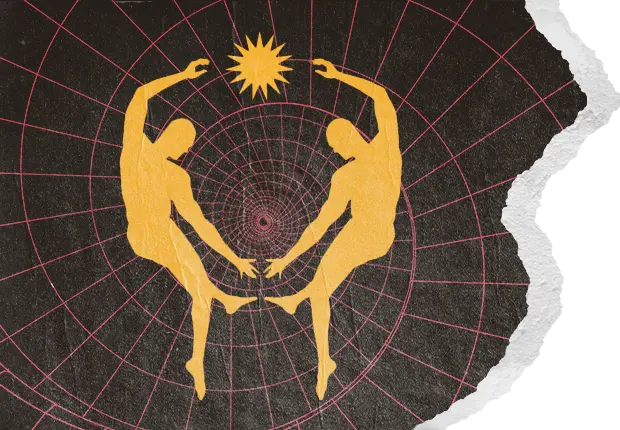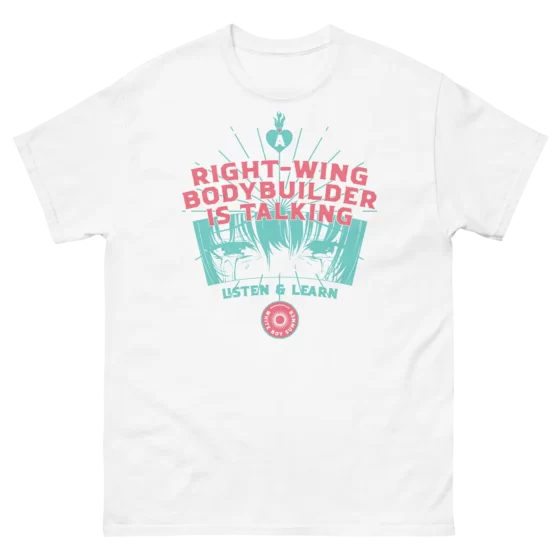The Optimization Cycle
If you’ve been on the internet any amount of time, you’ve almost certainly encountered some version of the meme: “Hard times create strong men, strong men create good times, good times create weak men, weak men create hard times.”
It’s a pithy way of conveying what is known as the cyclical theory of history, and one I find myself partial to. The cyclical theory is not so much in vogue these days, with most people subscribing to the Whig theory of history, even if they don’t recognize it as such.
The Whig theory of history is best captured by that noxious Martin Luther King Jr. quote: “The arc of the moral universe is long but it bends toward justice.” In this formulation, history is a story of never-ending progress toward a more glorious present. This worldview is why every historical figure needs to be constantly reevaluated against the values of the present moment, and ultimately cast into the waste bin of history for being irredeemably racist/sexist/homophobic etc. If the present is a better, more progressive time than the past, we couldn’t possibly learn anything from our benighted forbears.
But I look around the modern world and see evidence of cyclical theory everywhere, especially regarding the obsession people have with “optimizing” everything nowadays. My take on optimization culture is that inevitably things reach what I’ll just refer to as “peak gay,” until some forgotten piece of old wisdom, or a groundbreaking new innovation comes in to cut through the accumulated rot and begin the cycle anew.
Now when I say “gay,” I don’t necessarily mean “homosexual;” although that sometimes applies as well. No, when I say gay, I mean more in terms of the way we used it in the “before times” (pre 2014), to mean generally bad or dumb. (Side note: I have it on good authority that schoolchildren no longer call each other “gay” as an insult. Instead they now hurl the epithet “racist” at one another. This itself is an example of the optimization cycle applied to insults, since racism is presently seen as the worst thing one can possibly be accused of.)
Basically what happens is some sport or industry or whatever starts out, and at the beginning there’s a ton of trial and error and wide open space for innovators, with relatively low barriers to entry, so you get lots of experimentation resulting in cool, wacky, useless, or innovative stuff. Eventually, though, the logic of competition leads to an optimization arms race, which narrows the range of possibilities and often culminates in something really lame. This is peak gay, where everyone realizes they can win with a sort of gimmicky trick which renders the overall quality of the endeavor just generally less cool or appealing than it was at the outset.
Let’s look at a few examples of this theory of optimization in action.
The National Basketball Association was founded in 1946, and was not particularly popular until the 1980s when Magic Johnson and Larry Bird set the league on fire with one of the greatest rivalries in sports. Before this time, NBA players were more comparable to modern-day semi-professional fighters in B-list fight promotions. Sure they made some money in their sport, but they had to work other jobs too. This led to interesting situations which simply would never happen today.
For instance, eleven-time NBA All-Star Elgin Baylor served in the Army for the 1961-62 season. He was only able to play in weekend games when granted a pass by his commanding officer, didn’t attend practices during the week, and still averaged 38 points and 18 rebounds per game on one of the top teams in the league. Other players spent their off-seasons delivering milk, installing carpet, or selling insurance.
What this meant was that regular Joes with some above-average athleticism and grit could pick up basketball as a pastime and potentially go pro with it. Before the advent of hyper competitive youth-club sports, the idea of a child playing the same sport year round was unheard of. Kids played football in the fall, basketball in the winter, baseball in the spring, and got into rumbles with the rival youth gang outside the sodie shop in the summer. We used to be a country. A proper country.
Contrast that with the landscape of modern basketball. Now 99% of players in the league have essentially been professionals since kindergarten. For instance, if a child begins playing year-round club basketball at age six, they’ll have effectively played 12 seasons of basketball by the time they are even eligible for the NBA. This cultivates a cringe-inducing environment where foolish parents treat children like potential lottery tickets, often damaging their relationship with their kid and also restricting children from important carefree pursuits like free play and experimenting with other sports and activities.
The modern NBA is great work if you can get it. Players moonlight as twitch streamers and social-media influencers, make tens of millions of dollars, have access to state-of-the-art facilities, the best doctors and coaches money can buy, and yet never stop whining about how overworked they are. In recent years it has become so common for teams to rest their healthy star players based on data analysis from their medical advisors that the NBA has literally had to institute rules to make star players play!
To watch an NBA game in recent years is to watch a bunch of freakishly gangly fellows milling about the court spamming threes, blatantly traveling, and attempting to draw fouls in increasingly annoying ways, all because some data-analytics nerd from MIT said that that’s the most optimal strategy.
All of this is to say, when I look at the old NBA that had grisly vets who bayonetted Japanese on Iwo Jima, and actually played defense, I can’t help but think things were just cooler then, even if the approach was “sub-optimal” compared to today.
Another example. Jiu-jitsu was made famous by the Gracie family, who showcased the efficacy of their skills in no-holds barred fights against all-comers regardless of weight class, culminating in the creation of the Ultimate Fighting Championship. Jiu-jitsu guys dominated the early MMA scene, popularizing jiu-jitsu gyms that started to become more prevalent in the U.S. in the 2000s.
Early on, jiu-jitsu was geared toward practicality for fighting and self-defense, but as its popularity grew and athletes started competing more in jiu-jitsu-only tournaments as opposed to fights, it took on more and more of a “sport” flavor. New and exotic ways of using the opponent’s gi for increasingly complex entanglements became popular, with the first guy to sit to his rear and establish grips gaining a decided edge. At the same time, the logic of market competition meant that jiu-jitsu schools were incentivized to water down curriculums and make their classes less hardcore in order to gain and retain students. Walk into a modern American karate dojo and you can see a much more advanced stage of this degenerative process where 12 year olds karate chop a 2×4 so that some fat guy who’s never been in a fight can award them a black belt.
Now gi jiu-jitsu is pretty well-known as the sport that nerds gravitate toward, yammering on about physics and “breaking mechanics” in a pseudo-intellectual manner when they’re not flopping around like a bunch of fish in their kimonos. Matches are dominated by guys shamelessly scooting toward each other on their butts and fighting to the death in the most meticulous and monotonous manner to win a world championship on a technicality.
What about outside the world of sports?
Journalists used to be blue-collar hard-drinking guys with rumpled white shirts that maybe went to college, but really just knew how to roll their sleeves up and get a scoop. Now the average journo was editor of the school newspaper for every school they ever attended and competes with a thousand other job applicants so they can write articles about how Doritos are transphobic or the time you posted some rap lyrics on Facebook in 2012.
The most iconic WW2 hero is Audie Murphy, a 5 foot 5 average Joe who only had a fifth-grade education. Murphy picked cotton before enlisting in the U.S. Army and earning every military combat award for valor available. Now all of our military icons are special ops cool-guys with Greek god physiques who knew they wanted to be a Navy SEAL or whatever since they were three years old when they started doing forced ruck marches and Crossfit workouts.
You catch my drift. War heroes from 50 years ago were not buying $99 premium workout plan PDFs to prepare themselves for a special ops selection. They were just the linebacker at the local high school who got drafted or decided to enlist in the Marine Corps and then killed a thousand enemies with an MRE spork or something before returning home to marry their high-school sweetheart Edna Mae and become a welder.
This optimization cycle has been at work even since ancient times. The Macedonian phalanx was seemingly optimal and insurmountable until the Romans learned they could use smaller, more maneuverable elements to force the enemy onto unfavorable terrain and effectively flank them. Then the Roman legions got thrashed at the battle of Carrhae thanks to the skill of the Parthian cavalrymen, who were able to fire three arrows in the span of 1.5 seconds, atop a horse.
Knights were aristocrats that got jacked on mutton while practicing swordsmanship and doing jousting tournaments when not on campaign for Christendom. A knight in full battle rattle atop his steed was like a tank in the medieval world, but then England had the bright idea to give peasants longbows and suddenly any average Joe could neutralize elite French cavalry troops.
The trend of hyper-optimization takes a lot of the spontaneity out of life, and just generally makes things less interesting, but it also inevitably leaves open chinks in the armor of the Leviathans currently dominating many different endeavors. So find your longbow, and get to work.
































